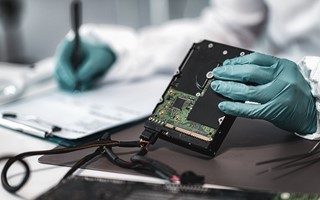News June 26, 2020 3m
Cellsite data provided by digital forensics can be valuable in a case, however there’s a growing trend for defendants to have ‘SIM-less’ phones – claiming that they only use their phone on wifi hotspots.
Does this mean their movements can’t be tracked? Can valuable information still be retrieved by the phone relevant to the case?
At one of our seminars last year a barrister mentioned the distinct lack of cell site data being presented in trials. Whilst we enjoyed our Cornish yarg and glass of red we pondered collectively over why this might be.
For some time cell site analysis played a huge part in a variety of cases but has proven particularly fruitful for the Crown in county lines cases. Now it appears that defendants are becoming more aware of the mobile phone data which is stored and what it can tell the police about where they may have been.
As a result, they are either leaving their mobile phones at home or removing the sim card and only using public wifi hotspots to communicate. Other times they are destroying sim cards prior to arrest to try and prevent the police being able to track their locations or attribute the phone to them.
This means that it is much harder for the investigation team to track down information on calls, texts or data usage, used to co-locate them with other suspects.
But not all data is held on the SIM card…
Our Digital Forensic Examiner, Chris Watts, reminds us that “the handset itself holds most of the retrievable data”. This includes details of the wifi connections the phone has made, GPS information if location services or bluetooth have been left on, or if the phone has a fitness app that records the daily number of steps made by its owner.
Digital forensic investigators and cell site experts can use this data to provide the potential locations and movements of the handset just as they would with call data records.
In some cases, the phone itself has been destroyed, leading the suspect to believe that no data can be recovered. In these cases, all is not lost. “Provided the IMEI number of the phone is still visible, it is possible to contact the service provider to request the phone number(s) it has been used with” explains Chris Watts. A further request can be made for all call data records for the numbers associated with that handset. In practice this may require a court order for the company to release the information to you unless your client agrees.
All this is well and good, but what benefits does it provide to the defence?
Remember that adage ‘knowledge is power’? No one likes to be caught unawares of potential evidence in a case. Chris Watts states “if your client discloses that they have destroyed their SIM to thwart police investigations; be very cautious”.
As I have outlined above, there are many ways that a suitably experienced cell site expert can generate data that can be used exactly for this purpose.
As a Forensic Access customer and newsletter subscriber, we provide you with key insights into all disciplines of forensics, including digital forensics like this information about cell site. We provide free consultations with either our casework management team or with our experts about your particular case to ensure you are fully aware of all the potential evidence that may be presented against your client. Whether that’s looking over areas to challenge on a streamline forensic report (SFR), raising areas of potential examination, or ensuring that the evidence presented in the case is done so in a fair and honest way.
A final word from our cell site expert Chris Watts to make sure you get the most out of your case:
“By involving us in an advisory capacity at an early stage in your case and providing us with as much information as you can, means we will be able to help you and your client much more effectively.”
To find out more about the Digital Forensics services offered by Forensic Access fill-in our online contact form or Tel: 01235 774870 to speak with our team.


